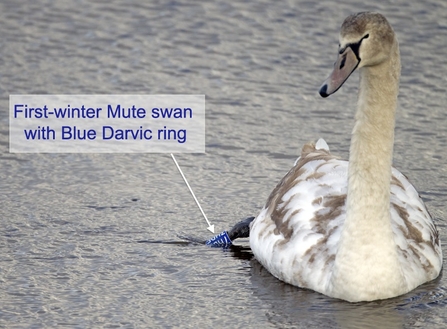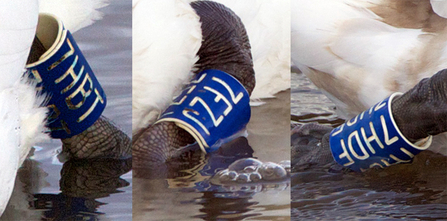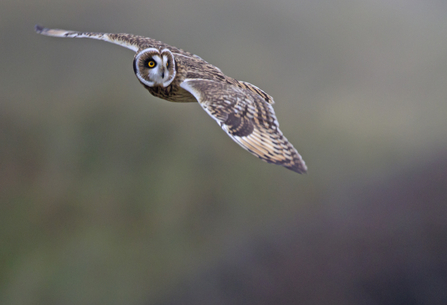Over the Christmas period, I spent a rather gloomy few hours one afternoon down by the Leri River, the same river that our female chick was named after, of course, just around five miles west of the osprey nest. There were four Mute swans feeding on the river, three adults and a juvenile, and all but one were ringed with blue leg rings.
Juvenile Mute swan with a blue leg ring clearly showing



